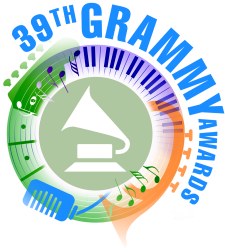Nashville, TN: The TV950 on-air console, introduced by Harrison by GLW at April’s NAB National Convention in Las Vegas, has been selected for a couple of high-profile installations in Belgium and the U.S.
 Harrison has shipped a 52-wide TV950 to the Belgian Radio and Television Network (BRTN). It will be installed in a new BRTN mobile unit for use in live broadcast feeds. The console is configured with 30 mono mic/line inputs, 6 stereo inputs and 6 group modules. Along with standard assignable fader start logic and two program masters, this TV950 is equipped with a 24 multitrack busing on all inputs, groups and master modules, for multitrack output level control.
Harrison has shipped a 52-wide TV950 to the Belgian Radio and Television Network (BRTN). It will be installed in a new BRTN mobile unit for use in live broadcast feeds. The console is configured with 30 mono mic/line inputs, 6 stereo inputs and 6 group modules. Along with standard assignable fader start logic and two program masters, this TV950 is equipped with a 24 multitrack busing on all inputs, groups and master modules, for multitrack output level control.
In the U.S., A.H. Belo Corporation has ordered a TV950 for its new Washington, D.C. bureau. This is a smaller configuration, with with 6 mono mic/line inputs, 6 stereo line inputs and 4 stereo groups, all equipped with mix-minus feed modules and standard assignable fader start logic. The master section contains 2 program masters, monitor module, dual studio module and a master communications module.
According to Dave Hunn, Chief Engineer of Belo’s flagship station, WFAA Dallas: “We chose the TV950 for its flexibility and very complete IFB/mix-minus system, which will meet most any ‘live shot’ situation or production setup. This, combined with the quality and reliability of the Harrison products already in use at other Belo stations made the choice easy.”
The new Washington bureau will provide news facilities for the A.H. Belo Corporation-owned television stations and newspapers. Broadcast facilities will include five edit suites, a production control room and fully-equipped studio. Planned uses include multiple simultaneous live feeds and pre-produced shows which will be shared by all Belo stations.
The TV950 is designed specifically for television broadcast applications. It received an Editor’s Pick of the Show award from Television Broadcast Magazine at the NAB Convention where it was introduced in April (1996). Its available features include assignable machine logic, three mix-minus options, either 4 or 8 stereo buss groups, mono or stereo input modules, control room/studio/comm module with tallys and automated router interface, and LCRS panning for surround applications. Frame sizes may be configured for up to 64 positions, in virtually any combination of stereo or mono inputs, groups, communications and program modules. Pricing begins in the $40,000 (U.S.) range.
 New York, NY. In a press conference Monday, Michael Greene, President of the National Academy of Recording Arts and Sciences (NARAS) announced that the music and audio industry’s premiere annual awards ceremony has outgrown its traditional venues.
New York, NY. In a press conference Monday, Michael Greene, President of the National Academy of Recording Arts and Sciences (NARAS) announced that the music and audio industry’s premiere annual awards ceremony has outgrown its traditional venues.